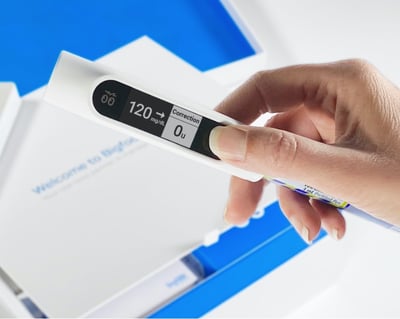Shift Work and Diabetes: How to Manage Blood Glucose With Irregular Work Hours
By Erin Davis
 Diabetes management plans often assume a standard daytime schedule, but this isn’t the case for those doing shift work. If you work night shifts, here are some ways you can better manage your glucose.
Diabetes management plans often assume a standard daytime schedule, but this isn’t the case for those doing shift work. If you work night shifts, here are some ways you can better manage your glucose.
Do you work variable shifts? Are you headed to work when most people are going to bed? First of all, thank you from the rest of us; without those willing to work at night, there’d be no one to run crucial 24-hour operations, such as hospitals, police forces, or transportation systems.
Those late shifts, however, can leave you short on sleep. In addition, shift work can throw a wrench in your blood glucose management. But it doesn’t mean you can’t adequately manage glucose levels. There are strategies to help you achieve your A1C, time in range, and other health goals.
How night shifts and rotating schedules affect diabetes management
In diabetes care, timing is everything. Given that everything from medication to meal timing has an impact on blood glucose levels, variable shift work – specifically rotating, night, and waterfall shift schedules – largely affects blood glucose management.

Increased risk for low blood sugars
With shift work often comes an increased risk for hypoglycemia, said Aleida M. Saenz, a certified diabetes educator at the Diabetes Research Institute in Miami. “Frequently, you spend the majority of your shift on your feet. This physical demand is not only tiring but there’s a potential risk of hypoglycemia,” she said.
Increased risk for high blood sugars
Surprisingly, you may also experience high blood sugar. Why? For starters, research shows that nurses eat a larger amount when working the night shift, and that people working nights tend to consume more irregular meals and more snacks. They also eat less core nutrient-dense foods and more calories from sugar-sweetened foods.
Inconsistent insulin timing
Next, your medication timing may be out of whack. If you’re supposed to take insulin at every meal, but you’re snacking all night to keep your eyes open, you may be underdosing yourself. And these may not be the only reasons for elevated blood sugars.
How variable shifts impact the body’s circadian rhythm
Circadian rhythm is the internal clock that is involved in multiple processes in your body. The clock runs on a 24-hour schedule and is regulated by daylight. For this reason, working at night and sleeping during daylight hours disrupts your circadian rhythm.
Night shift work is linked to circadian disruption, poor sleep quality
 Circadian disruption is linked with several health problems. For instance, shift work increases the risk of metabolic syndrome, a major risk factor for developing diabetes.
Circadian disruption is linked with several health problems. For instance, shift work increases the risk of metabolic syndrome, a major risk factor for developing diabetes.
Hormones such as melatonin and cortisol are closely regulated by the presence (and absence) of daylight. Normally, melatonin levels would be high at night and low in the morning, and cortisol follows the opposite trend. This is so that you fall asleep and wake up after an adequate night’s rest.
As a result, when you are sleeping as cortisol levels are at their peak, you don't sleep as well.
Nighttime lows can cause even more sleep interruptions
And if you have diabetes, often cortisol isn’t the only variable disrupting sleep – there’s low blood glucose, too. “When these dedicated professionals return home to rest, they run the risk of hypoglycemia while asleep,” said Saenz. As a result, many shift workers are deprived of much-needed rest.
Is being a night owl bad for your health?
What if you just like staying up late? Is there harm in being a night owl? The short answer: possibly.
Recent research has highlighted the increased risk of type 2 diabetes in those who prefer late nights. It seems as though early-to-bed and early-to-rise are better for overall health. When the research team compared night versus morning people, night owls were more likely to have health behaviors such as smoking, drinking, inferior diet quality, and less physical activity.
That said, it’s important to remember that other behaviors, like creating lasting healthy lifestyle habits, make the biggest difference.
Diabetes technology for better diabetes management during shifts
 The age of technology has ushered in numerous options for managing blood glucose. Continuous glucose monitors, insulin pumps, and smart insulin pens are some of the many advancements that aim to make living with diabetes easier.
The age of technology has ushered in numerous options for managing blood glucose. Continuous glucose monitors, insulin pumps, and smart insulin pens are some of the many advancements that aim to make living with diabetes easier.
For most, quitting the job isn’t an option. Besides prioritizing healthy habits, such as adequate sleep, regular physical activity, and optimizing diet quality, using diabetes technology is to your advantage. Here are some ways technology can help those burning the midnight oil.
Continuous glucose monitors (CGMs)
A continuous glucose monitor or CGM is a device that tracks glucose levels in real-time. CGMs have a number of benefits, one being tighter blood glucose control. When possible, Saenz recommends CGMs for shift workers with diabetes.
“You can set up an alarm system designed to trigger when your blood sugar levels approach the critical low threshold, typically set around 80 mg/dL. This ensures you receive warnings well before the onset of hypoglycemia,” she said.
The same goes for high blood sugar alerts. And because you are getting real-time data, you can make informed decisions about food, activity, and insulin dosing. You’ll know exactly how that stressful shift impacted your blood sugar – and be able to do something about it.
Insulin pumps with automated insulin delivery systems
For shift workers who are on rapid-acting insulin, Saenz highly recommends insulin pump therapy with automated insulin delivery: “The Tandem t:slim, Omnipod 5, and the Medtronic 780G are some of the pumps available that sync with a CGM to fine-tune insulin delivery and temporarily pause if necessary.”
Insulin pumps deliver small amounts of insulin as your body needs it. Adjustments are easy and can be done to suit your schedule – for your night shifts and days off – and automated insulin delivery software has been shown to increase time in range.
Smart insulin pens
 A smart insulin pen is an insulin delivery device that records when you administer insulin, and how much you’ve taken. It will also remind you when it’s time to take your insulin dose.
A smart insulin pen is an insulin delivery device that records when you administer insulin, and how much you’ve taken. It will also remind you when it’s time to take your insulin dose.
Smart pen sensors, such as InPen and Bigfoot (at left), work by connecting to your smartphone via Bluetooth. From there, you use the device’s compatible app to review your data.
If you’re groggy from yet another crazy shift, using smart insulin pens means that you don’t have to worry about double-dosing yourself. Likewise, you’ll see if you forgot to take your dose. One more benefit: You’ll be able to skip dosing math, as the smart pen will do it for you.
Learn more about ways to simplify diabetes management and achieve your health goals:
Photo credits: Bigfoot Biomedical (smart pen); iStock (all other photos).








